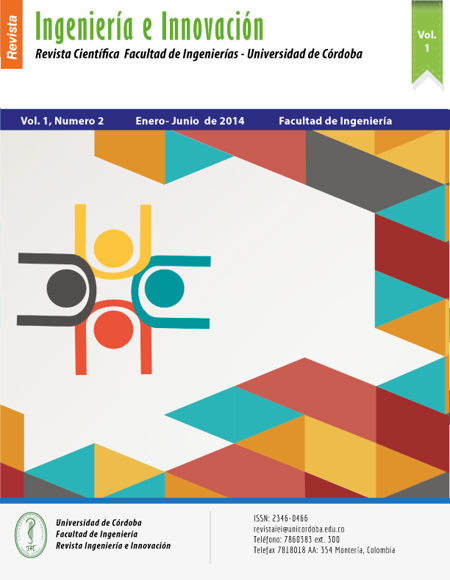USING STUDENT MENTAL STATE AND LEARNING SENSORY MODALITIES TO IMPROVE ADAPTIVITY IN E-LEARNING
USING STUDENT MENTAL STATE AND LEARNING SENSORY MODALITIES TO IMPROVE ADAPTIVITY IN E-LEARNING
Cómo citar
Rodriguez, P. C., Paternò, F., & Jimenez, J. (2014). USING STUDENT MENTAL STATE AND LEARNING SENSORY MODALITIES TO IMPROVE ADAPTIVITY IN E-LEARNING. Ingeniería E Innovación, 2(1). https://doi.org/10.21897/23460466.1432
Dimensions
Mostrar biografía de los autores
In this paper, we present an innovative solution to improve adaptivity in an e-learning system using Brain Computer Interface (BCI) measures (Attention/Meditation) in order to detect changes in students’ preferred perceptual modes for learning information (VARK model). Our solution is also able to report course units and learning resources that could be difficult for the students.
Visitas del artículo 461 | Visitas PDF
Descargas
Los datos de descarga todavía no están disponibles.
- E. Popescu, P. Trigano, and C. Badica, “Relations between Learning Style and Learner Behavior in an Educational Hypermedia System: An Exploratory Study,” in Eight IEEE International Conference on Advanced Learning Technologies, 2008, pp. 725–726.
- Popescu E, “Adaptation provisioning with respect to learning styles in a web-based educational system: an experimental study,” J. Comput. Assist. Learn., vol. 26, no. 4, pp. 243–257, 2010.
- [Sabine G, Tzu-Chien L, and Kinshuk, “Analysis of learners’ navigational behaviour and their learning styles in an online course,” 2010, vol. 26(2), pp. 116–131.
- Eltigani Y, Mustafa A, and Sharif S M, “An approach to Adaptive E-Learning Hypermedia System based on Learning Styles (AEHS-LS): Implementation and evaluation,” Int. J. Libr. Inf. Sci., vol. 3, no. 1, pp. 15–28, Jan. 2011.
- [Drissi S and Amirat A, “An adaptive educational hypermedia system integrating learning styles: model and experiment,” 2012, pp. 1–7.
- Sabine G, Kinshuk, and Tzu.Chien L, “Identifying Learning Styles in Learning Management Systems by Using Indications from Students’ Behaviour,” 2008, pp. 482–486.
- Zataraín C R, Barrón E M, and Reyes G A, “A Fuzzy-Neural Network for Classifying Learning Styles in a Web 2.0 and Mobile Learning Environment,” 2009.
- Sabine G and Kinshuk, “Advanced Adaptivity in Learning Management Systems by Considering Learning Styles,” 2009.
- Pham Q D and Adina M F, “A literature-based method to automatically detect learning styles in learning management systems,” 2012.
- Dorça F A, Lima L V, Fernades M A, and Lopes C R, “Consistent Evolution of Student Models by Automatic Detection of Learning Styles,” 2012, vol. 10, pp. 2150–2161.
- Coffield F, Moseley, D, Hall E, and Ecclestone K, “Learning styles and pedagogy in post-16 learning: a systematic and critical review, LSRC reference,” Learning & Skills Research Centre, London, 2004.
- Felder R and Spurlin J, “Applications, Reliability and Validity of the Index of Learning Styles,” 2005, vol. 21, pp. 103–112.
- et al. “ Wolpaw, J.R, Birbaumer, N., “Brain–computer interfaces for communication and control,” Clin. Neurophysiol. Off. J. Int. Fed. Clin. Neurophysiol., vol. 133, no. 6, pp. 767– 791, 2002.
- R. Fazel-rezai, RECENT ADVANCES IN BRAIN COMPUTER INTERFACE SYSTEMS. Rijeka, Croatia: InTech Open Access Publischer, 2011, p. 234.
- M. Marchesi and B. Riccò, “BRAVO : A BRAin Virtual Operator For Education Exploiting Brain-Computer Interfaces,” CHI 2013, pp. 3091–3094, 2013.
- Rodriguez-C Paola-J, USING STUDENT MENTAL STATE AND LEARNING SENSORY MODALITIES
- L. F. Nicolas-Alonso and J. Gomez-Gil, “Brain computer interfaces, a review.,” Sensors (Basel)., vol. 12, no. 2, pp. 1211–79, Jan. 2012.
- A. Wilson and G. Schalk, “Brain-Computer Interfaces,” in Brain-Computer Interfaces, Human.Computer Interaction Series, D. S. Tan and A. Nijholt, Eds. London: Springer London, 2010, pp. 261–274.
- B. Van De Laar, G. Hayrettin, D. P. Bos, F. Nijboer, and A. Nijholt, “Towards Practical Brain-Computer Interfaces,” 2013.
- T. W. Berger, G. A. G. John K Chapin, D. J. McFarland, J. C. Principe, W. Soussou, D. M. Taylor, and P. A. Tresco, Brain-Computer Interfaces. An International Assessment of Research and Develoment Trends. Springer, 2008, p. 310.
- G. Dornhege, T. Hinterberger, and D. J. Mcfarland, Toward Brain-Computer Interfacing. Cambridge, Massachsetts: MIT Press, 2007, p. 520.
- H. de Garis, C. Shuo, B. Goertzel, and L. Ruiting, “A world survey of artificial brain projects, Part I: Large-scale brain simulations,” Neurocomputing, vol. 74, no. 1–3, pp. 3–29, Dec. 2010.
- I. NeuroSky, “Brain Wave Signal ( EEG ) of NeuroSky.” NeuroSky Brain-Computer Interface Technologies, p. 22, 2009.
- C. Hondrou and G. Caridakis, “Affective , Natural Interaction Using EEG : Sensors , Application and Future Directions,” pp. 331–338, 2012.
- A. Vourvopoulos and F. Liarokapis, “Robot Navigation Using Brain-Computer Interfaces,” 2012 IEEE 11th Int. Conf. Trust. Secur. Priv. Comput. Commun., pp. 1785–1792, Jun. 2012.
- M. Perakakis and A. Potamianos, “Affective Evaluation of a Multimodal Dialogue System Using Brain Signals,” in Spoken Language Technology Workshop (SLT), IEEE, 2012, pp. 43–48.
- A. Vourvopoulos, “Brain-controlled NXT Robot : Tele-operating a robot through brain electrical activity,” in Third International Conference on Games and Virtual Worlds for Serious Applications, 2011.
- H. K. . Goldberg, B.S., Sottilare, R.A., Brawner, K.W., Holden, “Predicting Learner Engagement during Well-Defined and Ill-Defined Computer-Based Intercultural Interactions.,” D’Mello, S., Graesser, A., Schuller, B., Martin, J.-C. ACII 2011, Part I. LNCS, vol. 6974, pp. 538–547, 2011.
- M. . Inventado, P.S., Legaspi, R., Bui, T.D., Suarez, “Predicting student’s appraisal of feedback in an its using previous affective states and continuous affect labels from EEG data.,” in Proceedings of the 18th International Conference on Computers in Education, 2010.
- W. . A. Gonzalez-Sanchez, J., Chavez-Echeagaray, M.E., Atkinson, R., Burleson, “An agent-based software architecture for a multimodal emotion recognition frame- work.,” in Proc. of 9th Working IEEE/IFIP Conference on Software Architecture, WICSA, 2011.
- M. M. Jackson and R. Mappus, “Applications for Brain-Computer Interfaces.”
- K. Krishnaswamy and R. Kuber, “Toward the development of a BCI and gestural interface to support individuals with physical disabilities,” Proc. 14th Int. ACM SIGACCESS Conf. Comput. Access. - ASSETS ’12, p. 229, 2012.
- Ingeniería e Innovación - Vol. 2:(1) Enero - Junio 2014 (66 - 75)
- G. S. Taylor and C. Schmidt, “Empirical Evaluation of the Emotiv EPOC BCI Headset for the Detection of Mental Actions,” Proc. Hum. Factors Ergon. Soc. Annu. Meet., vol. 56, no. 1, pp. 193–197, Oct. 2012.
- G. N. Ranky and S. Adamovich, “Analysis of a commercial EEG device for the control of a robot arm,” Proc. 2010 IEEE 36th Annu. Northeast Bioeng. Conf., pp. 1–2, Mar. 2010.
- H. Park, B. Myung, and K. Y. Sun, “Power consumption of wireless EEG device for Bel application,” no. 1, pp. 100–102, 2013.
- N. Fleming, Teaching and Learning Styles. VARK Strategies. 2012, p. 90.
- W. Leite, S. Marilla, and S. Yuying, “Attempted Validation of the Scores of the VARK: Learning Styles Inventory With Multitrait–Multimethod Confirmatory Factor Analysis Models,” in Educational and Psychological Measurement, 2009, pp. 323–339.
- R. Morgan and F. Baker, “VARK Analysis and Recommendations for Educators. In R. McBride & M. Searson (Eds.),” in Proceedings of Society for Information Technology & Teacher Education International Conference, 2013, pp. 1381–1385.





